Finally! Big, strong Stellantis is now ready with an electric car that can do something more. We test the new Peugeot E-3008.
Bilbasen was invited to France by Peugeot Denmark.
One size fits all. The car conglomerate Stellantis, which controls everything from Alfa to Opel, has until now thrown the same battery and the same powertrain into all of their electric cars. A solution that, especially in recent years, has been crying out for renewal, because you just don’t get very far with 54 kWh in half-sized cars.
The solution we’ve all been waiting for is called STLA. That is the name of the new electric car platform from Stellantis, which will form the basis for the company’s electric future with cars of different sizes, with different batteries and different services. In other words: Options!
The first car on the platform is the Peugeot E-3008. A medium-sized SUV whose name should be widely known in the Danish family, as it has sold over 15,000 copies since the 3008’s launch in 2016. What can it do in a brand new electric format, and is there potential in the platform?
I have the pleasure of taking a closer look at it when I drive the first trip in the big news in the South of France.
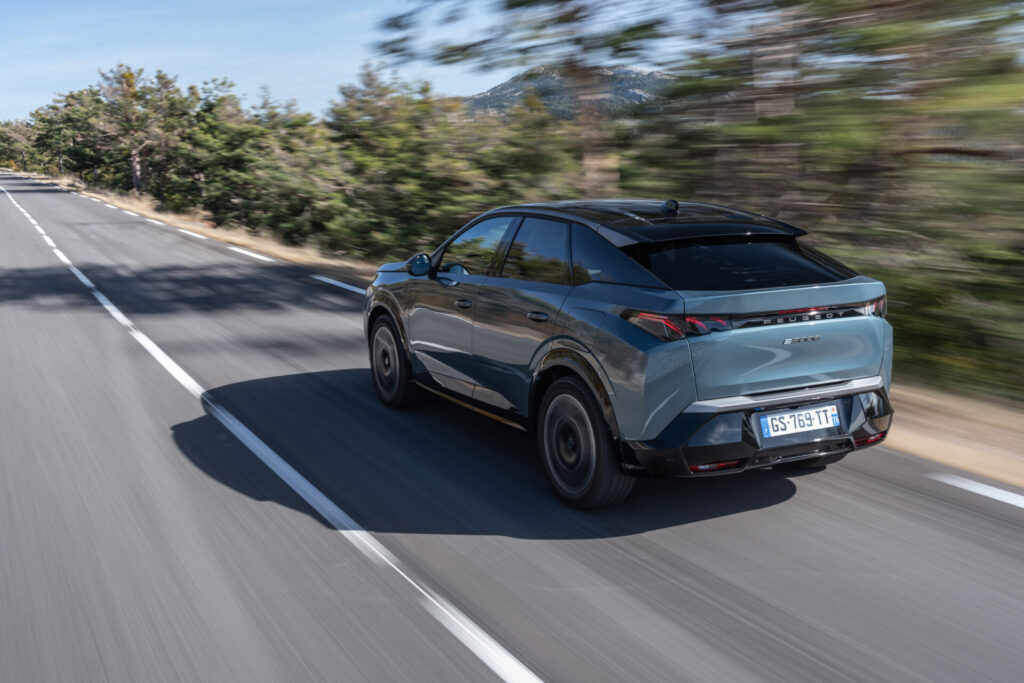
Up to 700 km in range
The Peugeot E-3008 is available with three different powertrains. The first to be launched and the one that I am in France to drive must be described as the ‘Standard Range’ with a 73 kWh battery and 210 hp from an electric motor on the front wheels. This gives a range of up to 525 km.
Later, a nimble Dual Motor variant with a 73 kWh battery and 310 hp will be launched with a similar range as the aforementioned. According to Peugeot, this is because they will be ready with a new battery from their own factory for the launch of Dual Motor. The battery will initially be supplied by BYD.
Finally, the Peugeot E-3008 will also be available in a Long Range variant, which with a large 98 kWh battery from its own factory and 230 hp should be able to reach 700 km in range. On AC, the E-3008 charges with 11 kW or 22 kW as an add-on, while DC lightning charging is handled with 160 kW. Heat pump is standard on our Nordic edges, while battery pre-heating is not available at launch, which can result in longer DC charge times in cold weather.


The Peugeot E-3008 is larger than its combustion-engined predecessor by almost 10 cm in overall length, 5 cm in width and barely 2 cm in height. In addition to more adult dimensions, the exterior design also clearly shows that the E-3008 is a completely new car.
The narrow headlights are now on top of the radiator grille, which is colored and well integrated. The front is decorated with Peugeot’s landmark in the form of the three LED claws on each side. The rear shows fastback tendencies with a spoiler and sharp lines reminiscent of the Peugeot 408. If you go into the details, you will see that there is a complete absence of chrome and superfluous trim, which, in my opinion, keeps the exterior expression clean.
How is the cabin?
The absence of chrome and plastic trim is not just to keep the design path clean. It is a choice that has been made to reduce redundant plastic altogether. A full 500 kg of the car’s total weight of 2,108 kg are recycled materials, and while the majority of this is made up of steel and aluminium, the external bumpers and spoilers are also molded in recycled plastic.
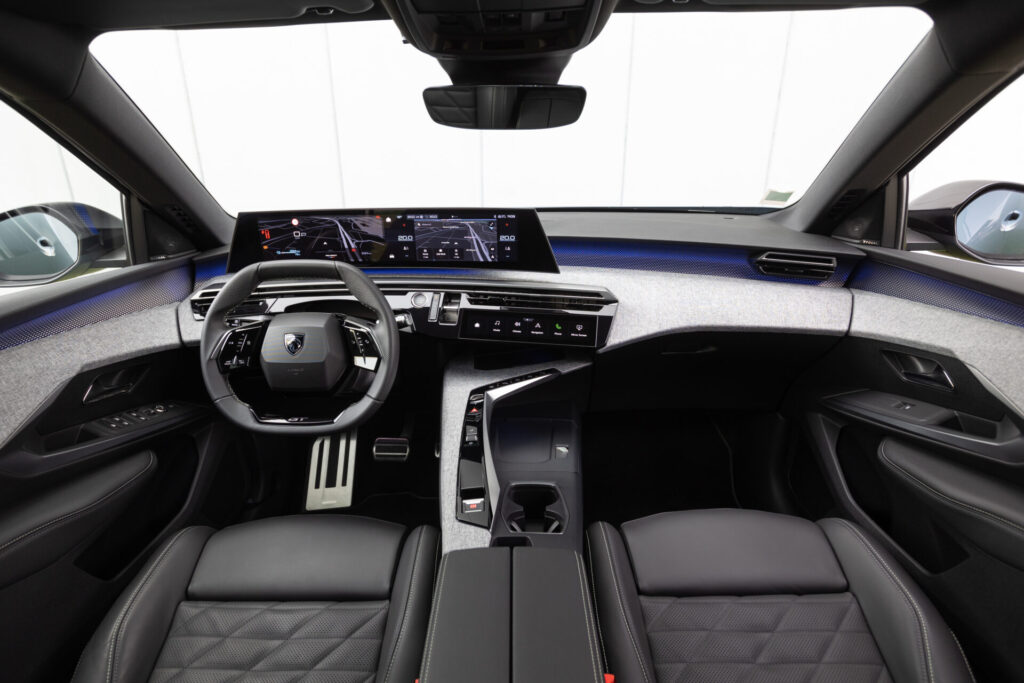

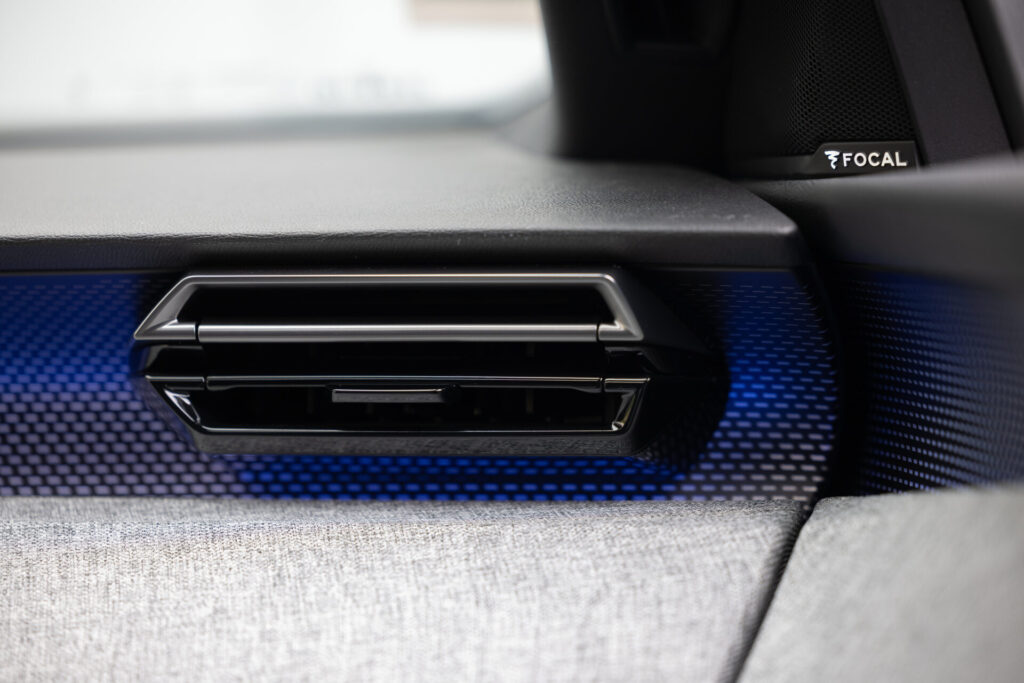
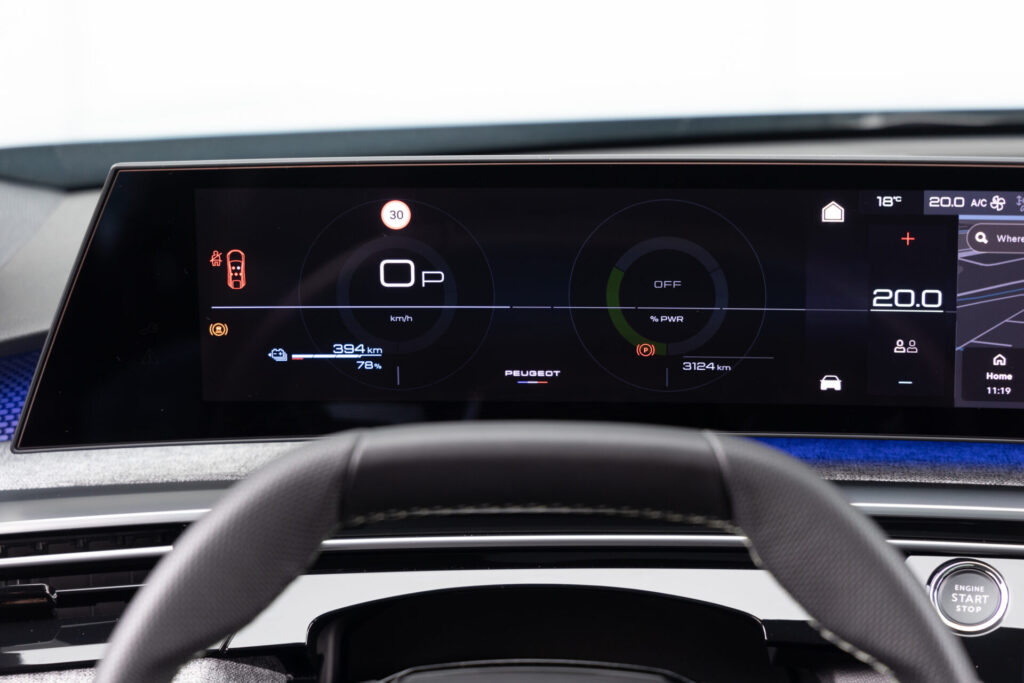
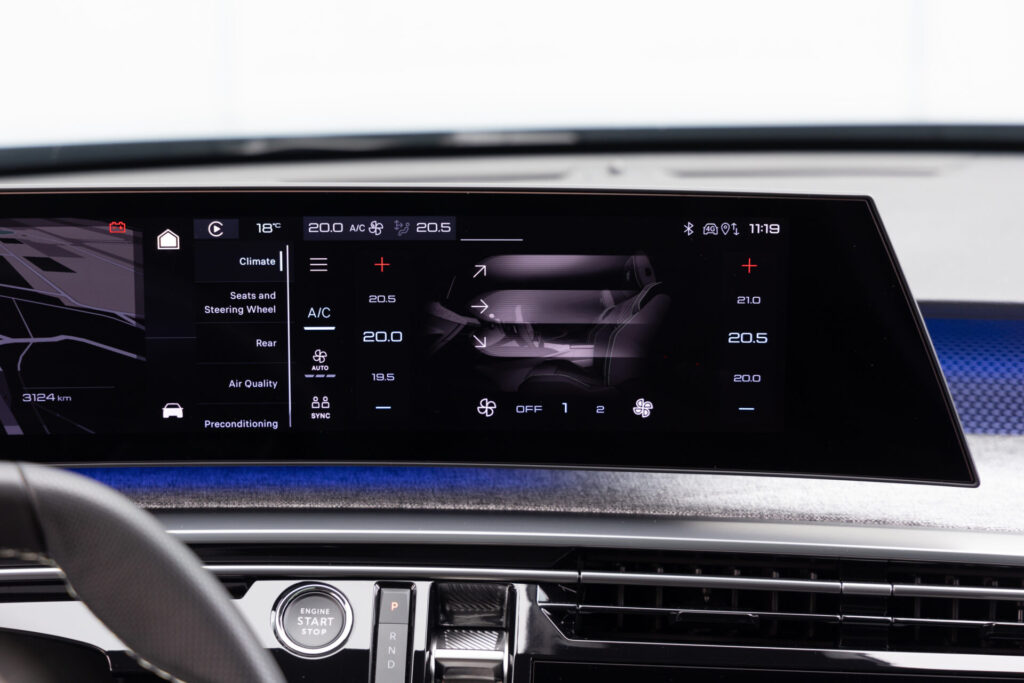
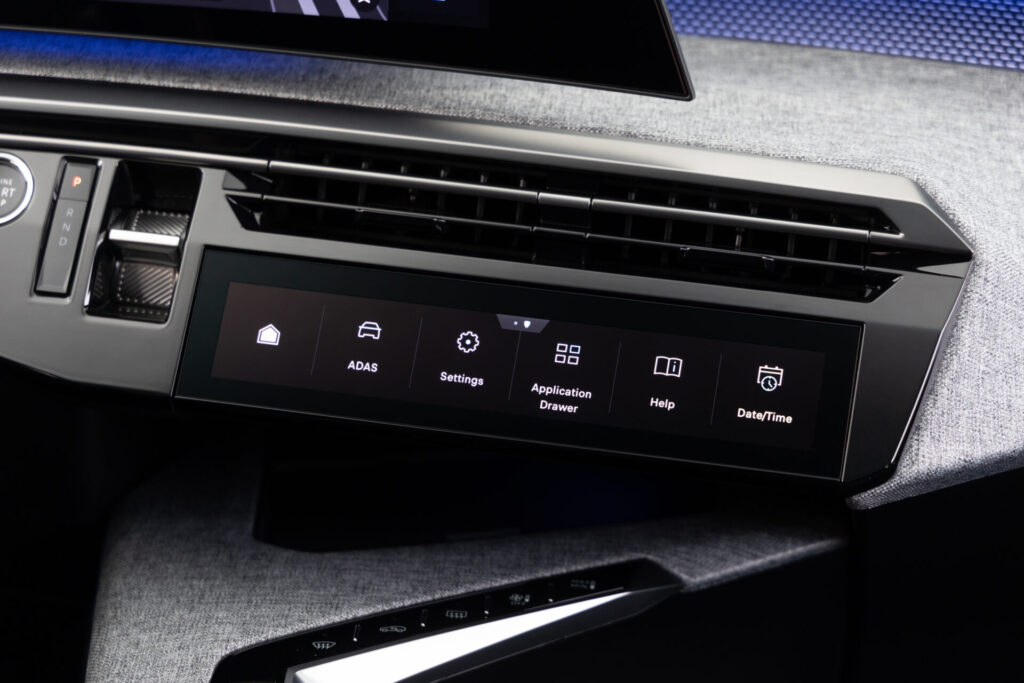
The cabin is also decorated with recycled plastic, but it is not something you feel. Peugeot E-3008 seems solidly screwed together in mainly soft materials with a modern touch in the form of the textile material on the dashboard and door sides. However, it doesn’t get more modern than the fact that you can still order your E-3008 with leather seats.
The cabin is classic Peugeot in the cool way. Here is a clearly defined cockpit with the small steering wheel that you can see over. Above the steering wheel is an elongated 21″ screen, which with its floating mounting makes the dashboard airy. The large and elongated screen is standard in the GT-Line, while the household models get two 10” screens in the same floating setup.
Regardless of which variant you choose, the small i-Toggle screen is available with icons that can be tailored to your needs. It looks cool and works well. Still, I would probably have preferred a dedicated climate panel for temperature adjustment. The new screens are nice, but there are still many submenus and small icons that are difficult to hit while driving.
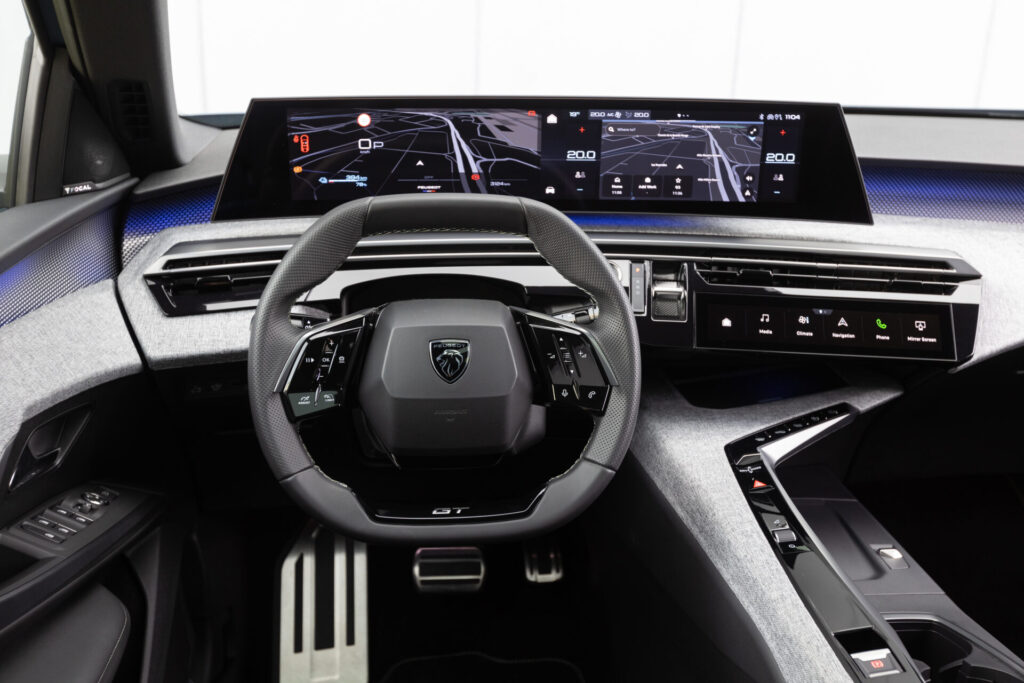

The small steering wheel in the E-3008 is also a new steering wheel, where Peugeot has replaced separate push buttons with plastic panels. It’s not as bad as the touch buttons on the steering wheel in the VW ID.7, because in the E-3008 there is a distinct click when pressed. Still, I prefer the old Peugeot steering wheel.
What about the square?
The cabin setup still feels very French, although it feels less exposed in the E-3008. From the driver’s seat, you quickly settle into the comfortable front seats, from which all operating options are within arm’s length. There is plenty of space in the front row, while the great headroom of 20 cm means that you can get up high and have a good view.
The back seat is more ordinary. The fastback line takes a bit of the ceiling height, which does not improve with the glass roof, which the tested GT-Line runs with. I’m 1.78 meters and I’m not bumping, but there’s not far to go.
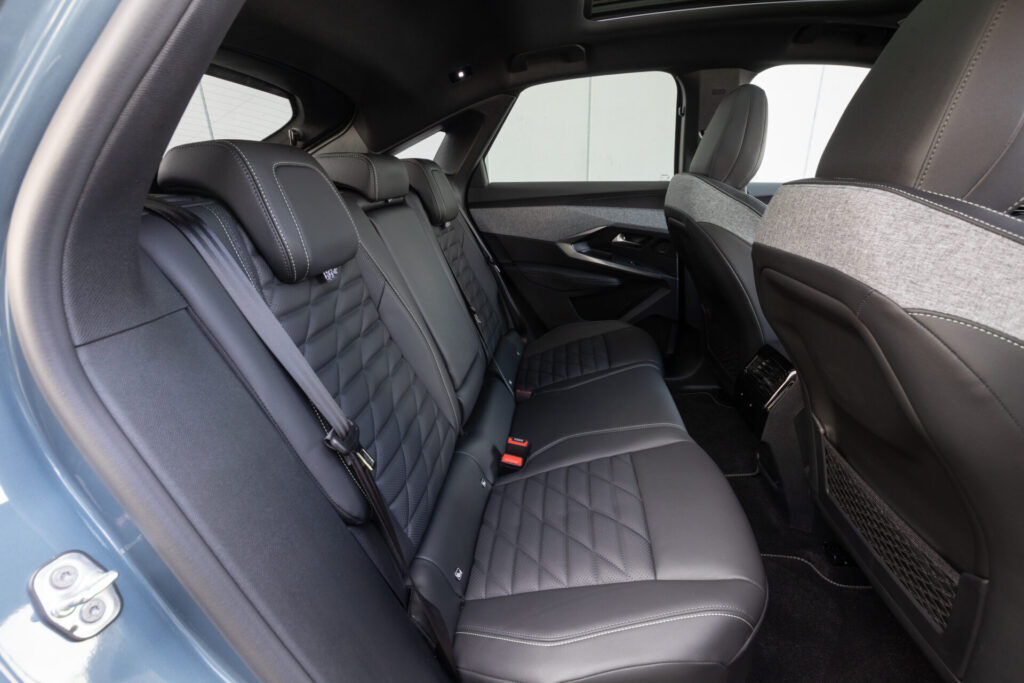


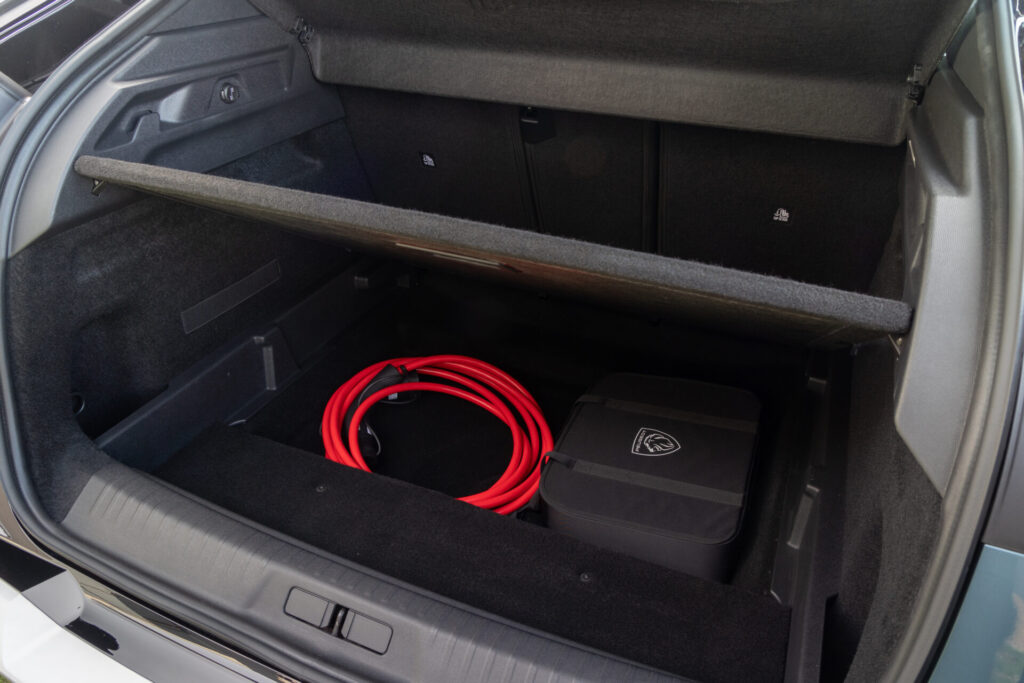
Legroom is slightly better and it takes a tall driver for rear seat space to be limited. Unfortunately, the battery at the bottom makes the floor high and raises the thighs slightly from the seat cushion, which can be reduced by tucking the feet under the front seat. The Peugeot E-3008 does not have the most spacious rear seat in the class, but it is excellent. If you have children with long limbs, you should probably wait for the E-5008, which will come… one day.
The luggage compartment, on the other hand, holds a nice 520 liters in the front-wheel-drive versions. If you choose the more potent Dual Motor, which will be launched later, the electric motor on the rear axle takes up 50 liters in the boot.
How does it run?
In short: Stable and predictable. Exactly as a Peugeot for the family should do. The French have long mastered the speed-dependent steering, which makes the cars feel agile around the corners of the big city and stable on the motorway. The new E-3008 is no exception.
The electric motor is located on the front axle, and it is usually anything but optimal with high-torque electric motors. Fortunately, the Peugeot E-3008 manages to grip the asphalt well, no matter how much you provoke it.

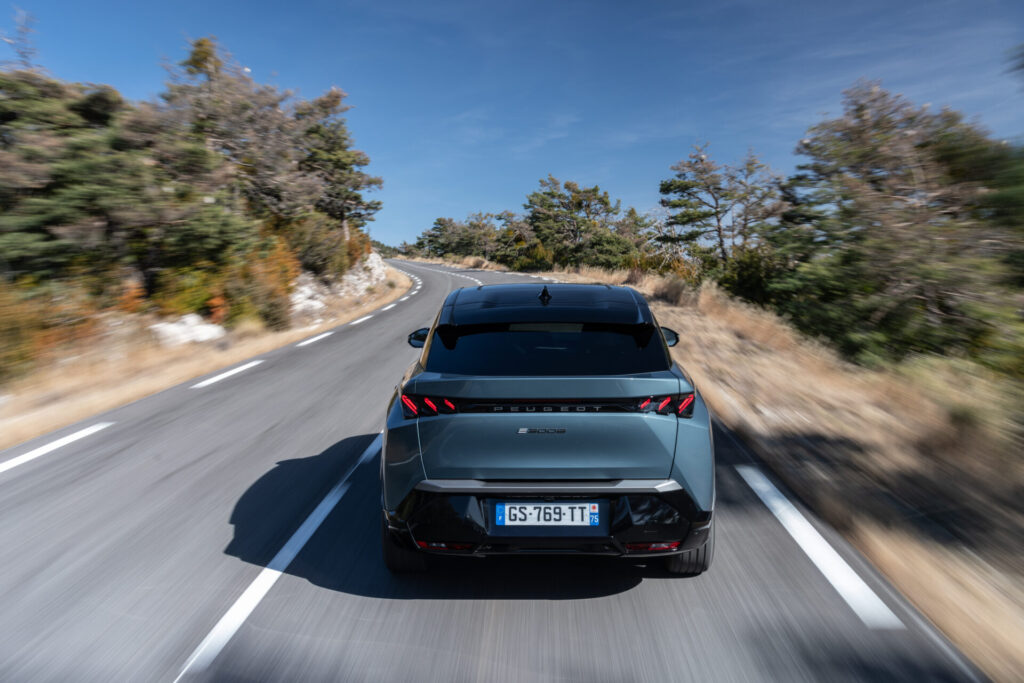
North from the film city of Cannes are winding mountain roads that are periodically wet with fresh meltwater from the highest peaks. Not only that, it gives rise to understeer, and you really have to drive like a commission-paid pizza delivery boy before the French front-wheel drive shows its face. There is both grip and stability on the road, driving the E-3008 close to rear-wheel drive competitors such as the Skoda Enyaq and VW ID.4.
A part of the stability is also the undercarriage, which is set up tightly. This means, on the one hand, that heeling is minimized and that the Frenchman is stable through fresh turns. On the other hand, it also means that the undercarriage can be experienced as a little restless at low speeds. Striking potholes are allowed to propagate in the cabin, but far from as much as they do in the competitor Tesla Model Y, which is relentlessly harsh.
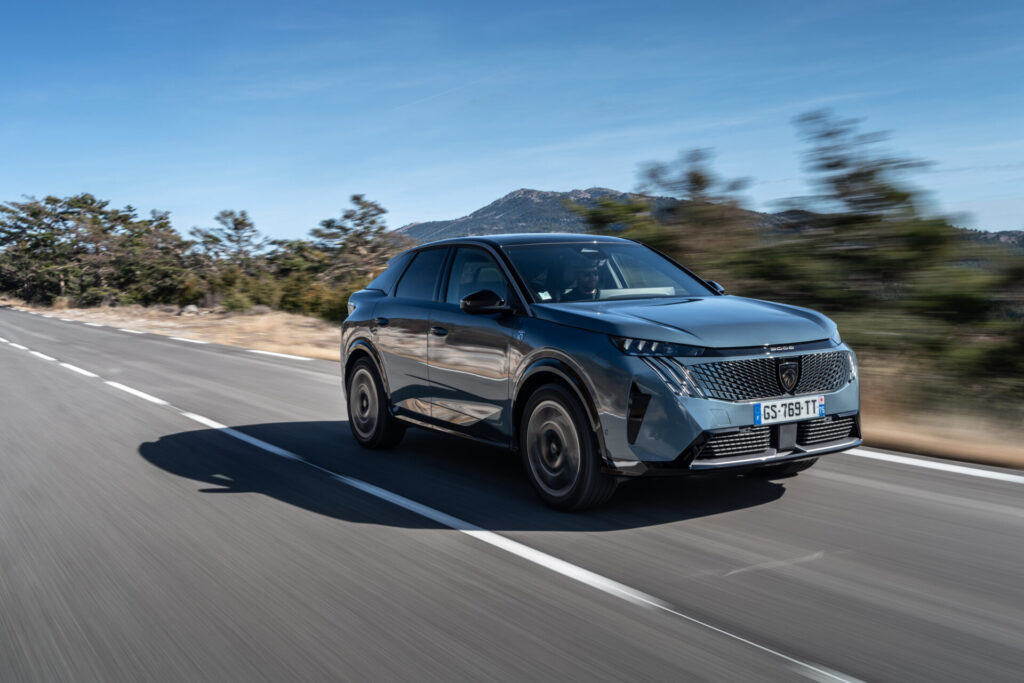
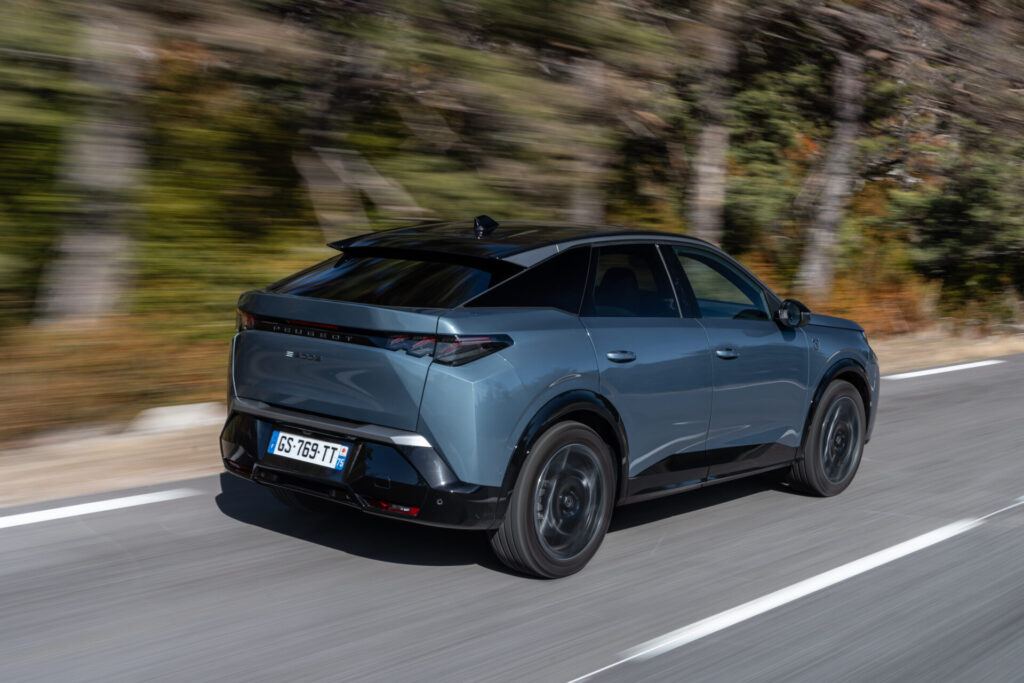
The disturbances are quickly eliminated when you get up to speed. The trip from 0 to 100 km/h is done in a quick but manageable 8.8 seconds, which should be enough for most people. The electric motor is quiet and so is the cabin, until you hit 120 km/h, when wind noise from the side mirrors starts to appear.
When and how much?
Stellantis’ investment and great electric hopes will come to Denmark already in the summer of 2024. The specifications speak their own clear language, while the measured and stable form on the roads tells me that there is enormous potential in the STLA platform and the first car on it, Peugeot E-3008. Unless it hits next to the price!
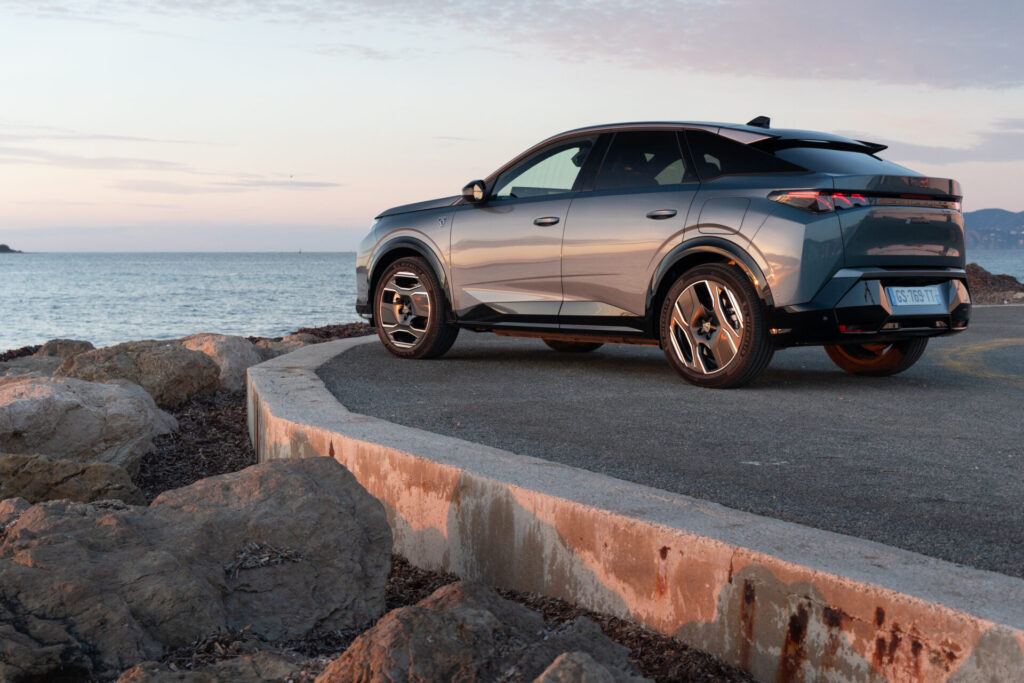
The prices are not clear yet, but with the ear on the water pipes for the French presentation, there does not seem to be any hope that the Peugeot E-3008 can keep up with the big competitor Renault Scenic E-Tech. It starts at DKK 309,990 but also has a considerably smaller battery with 60 kWh capacity in the entry variant.
A cautious price estimate for the Peugeot E-3008 is therefore closer to DKK 350,000. However, it is not a number that deters me from predicting success for the Frenchman. If you have driven a Peugeot before, you will feel at home in the new E-3008, which does not require getting used to even for new electric drivers. Add to that the fact that it must pull 1,250 kg on the hook and an 8-year service-activated warranty, and then it looks like a possible Danish hit!
The E-3008 is a Peugeot of rank, and I am looking forward to seeing it on the Danish country roads.
SPECIFICATIONS
Peugeot E-3008 GT-Line 210 hp
Engine: Electric (for)
Battery: 73 kWh
Performance: 210 hp / 345 Nm
0-100 km/h: 8.8 sec.
Top speed: 170 km/h
Spending: 13.4 kWh/100 km
Range: 525 km
Charging capacity: 160 kW
Dimensions (L/W/H): 454/189/164 cm
Curb weight: 2,108 kg
Draw weight: 1,250 kg
Trunk volume: 520 litres
Price: Unknown
